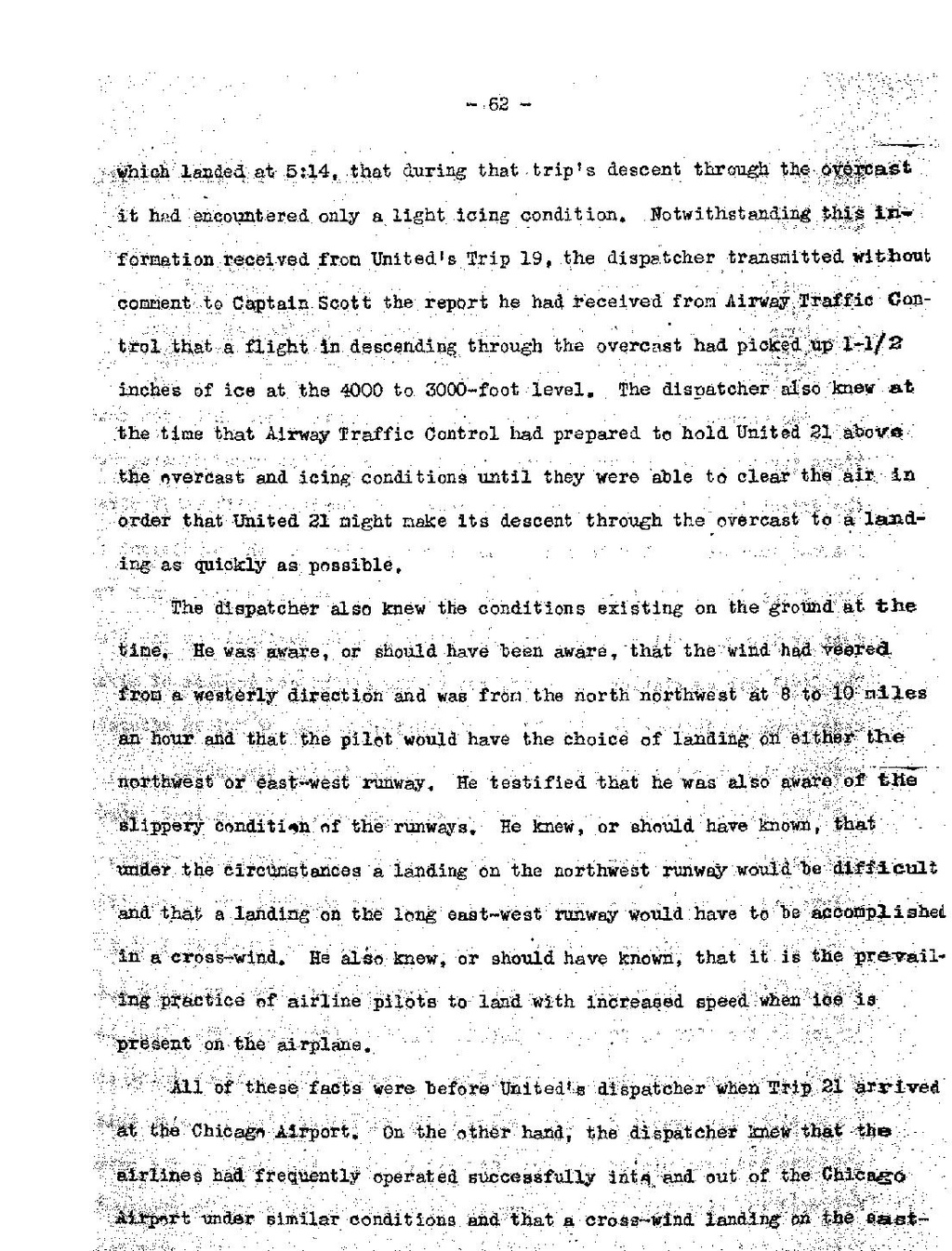- 62 -
which landed at 5:14, that during that trip's descent through the overcast it had encountered only a light icing condition. Notwithstanding this information received from United's Trip 19, the dispatcher transmitted without comment to Captain Scott the report he had received from Airway Traffic Control that a flight in descending through the overcast had picked up 1-½ inches of ice at the 4000 to 3000-foot level. The dispatcher also knew at the time that Airway Traffic Control had prepared to hold United 21 above the overcast and icing conditions until they were able to clear the air in order that United 21 might make its descent through the overcast to a landing as quickly as possible.
The dispatcher also knew the conditions existing on the ground at the time. He was aware, or should have been aware, that the wind had veered from a westerly direction and was from the north northwest at 8 to 10 miles an hour and that the pilot would have the choice of landing on either the northwest or east-west runway. He testified that he was also aware of the slippery condition of the runways. He knew, or should have known, that under the circumstances a landing on the northwest runway would be difficult and that a landing on the long east-west runway would have to be accomplished in a cross-wind. He also knew, or should have known, that it is the prevailing practice of airline pilots to land with increased speed when ice is present on the airplane.
All of these facts were before United's dispatcher when Trip 21 arrived at the Chicago Airport. On the other hand, the dispatcher knew that the airlines had frequently operated successfully into and out of the Chicago Airport under similar conditions and that a cross-wind landing on the east-
